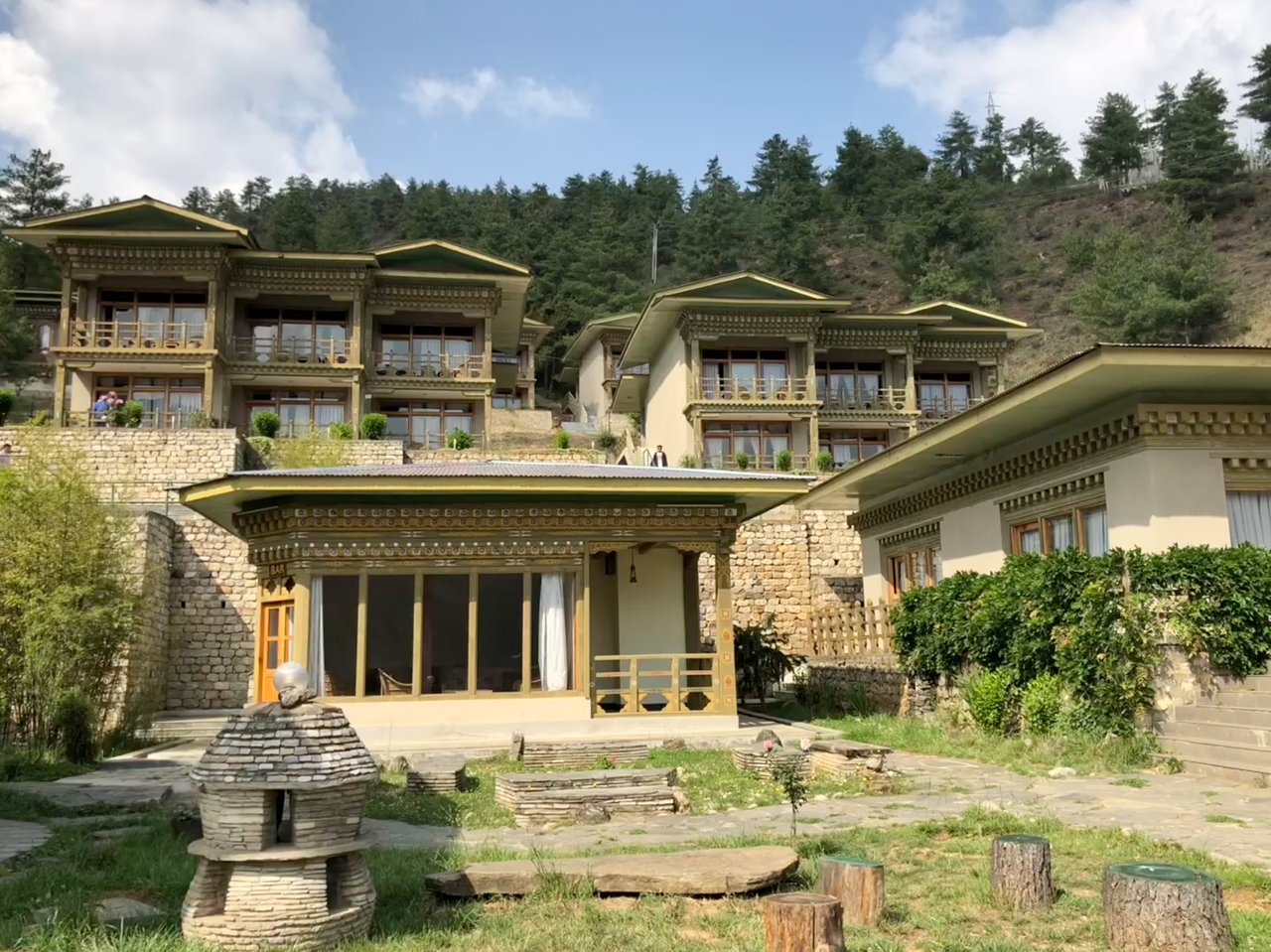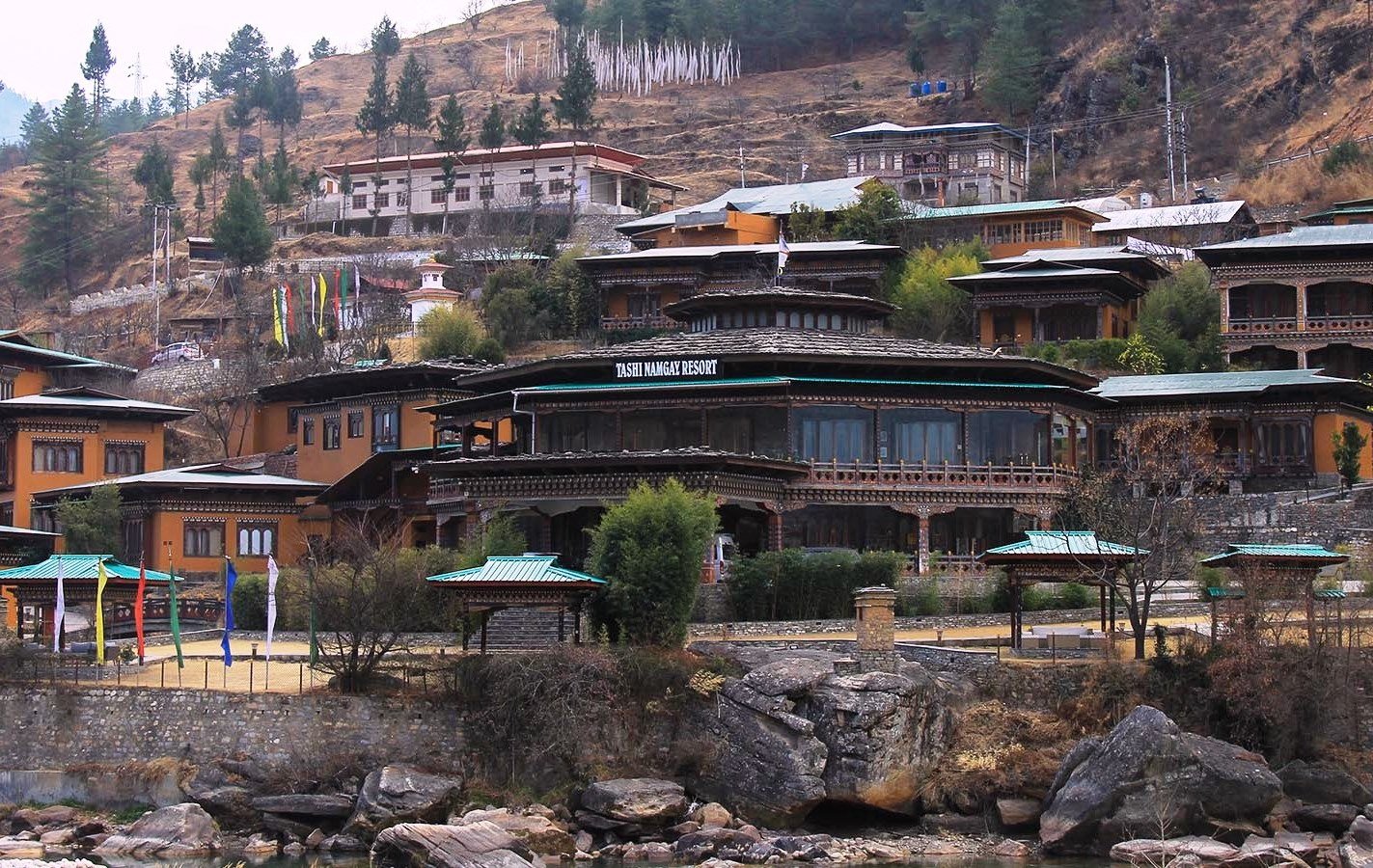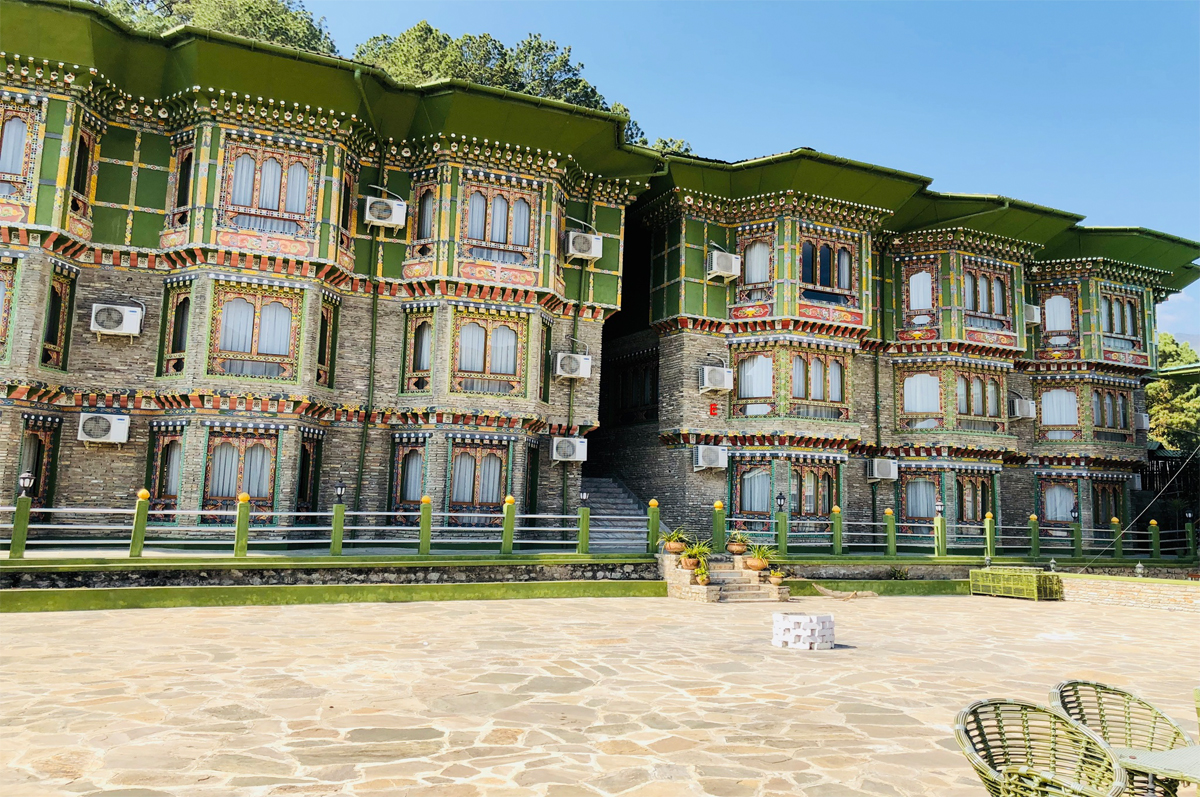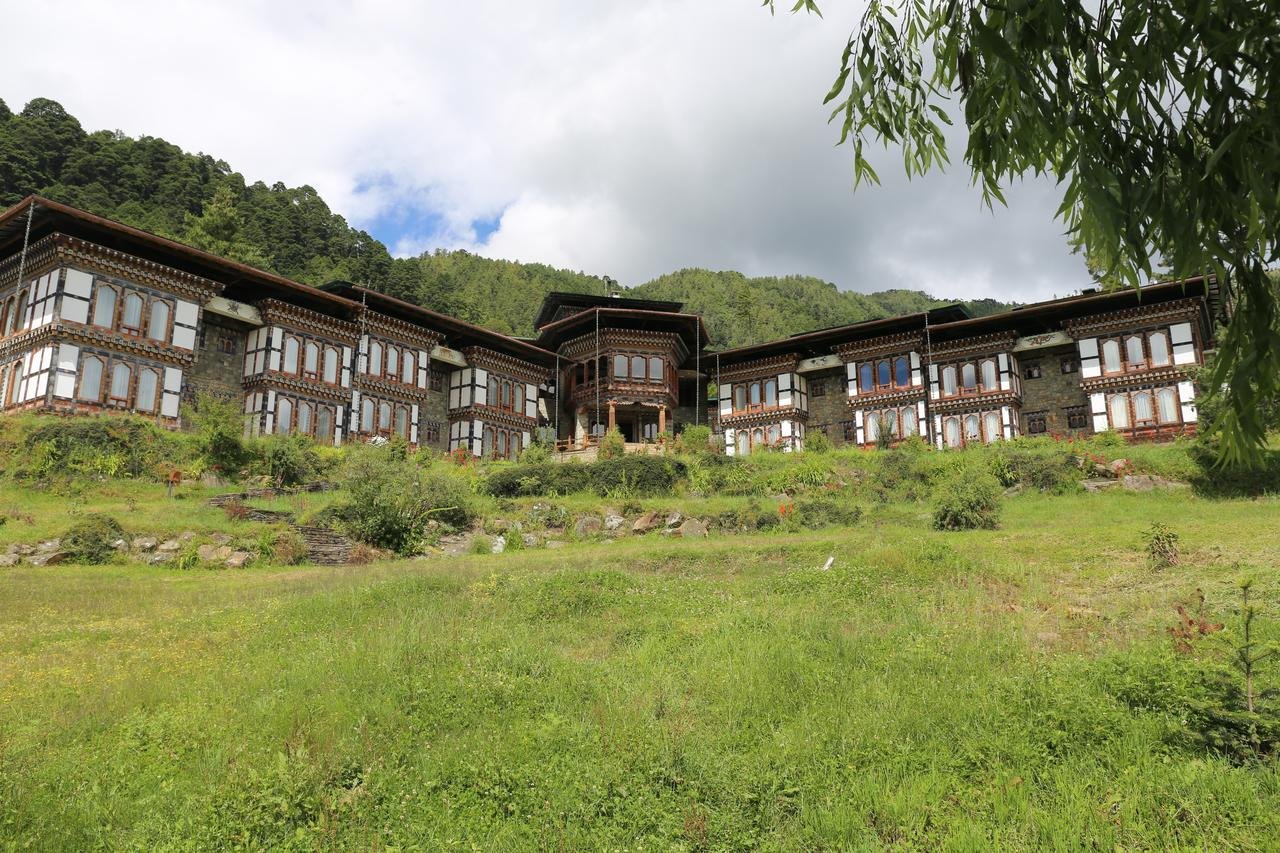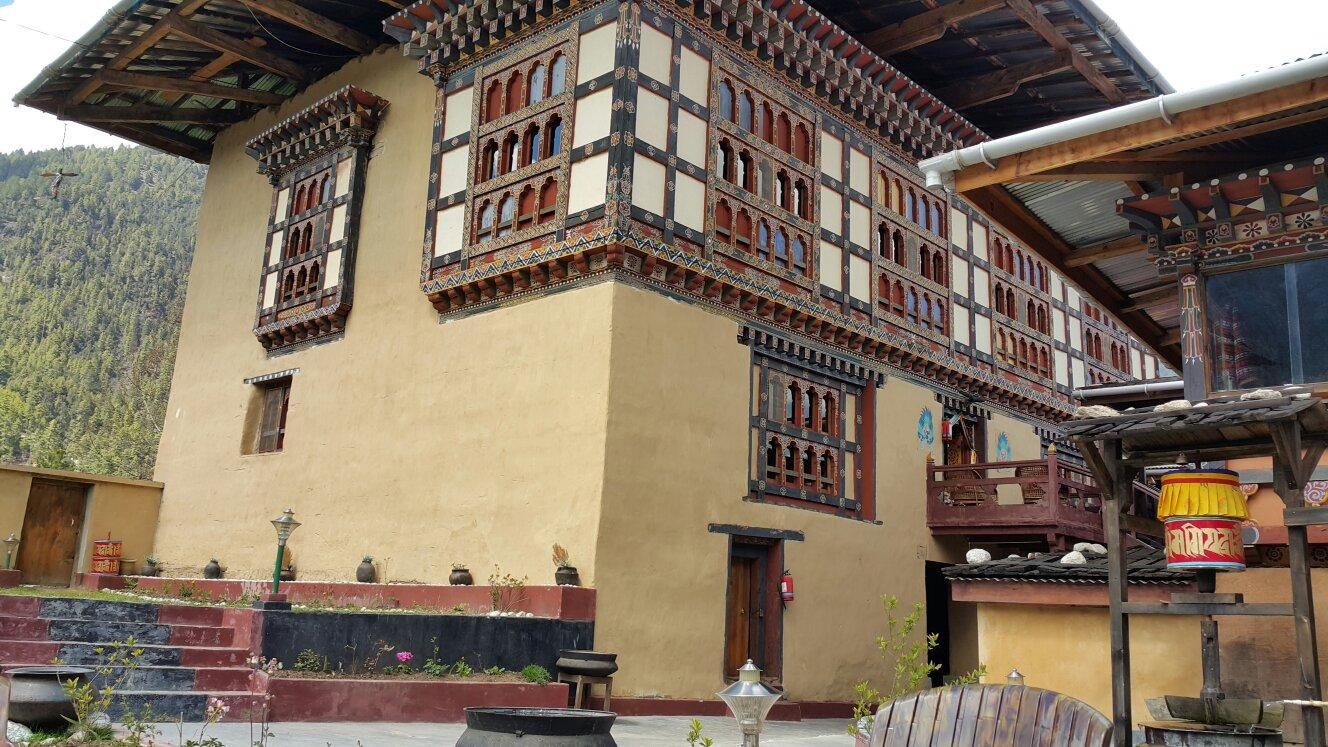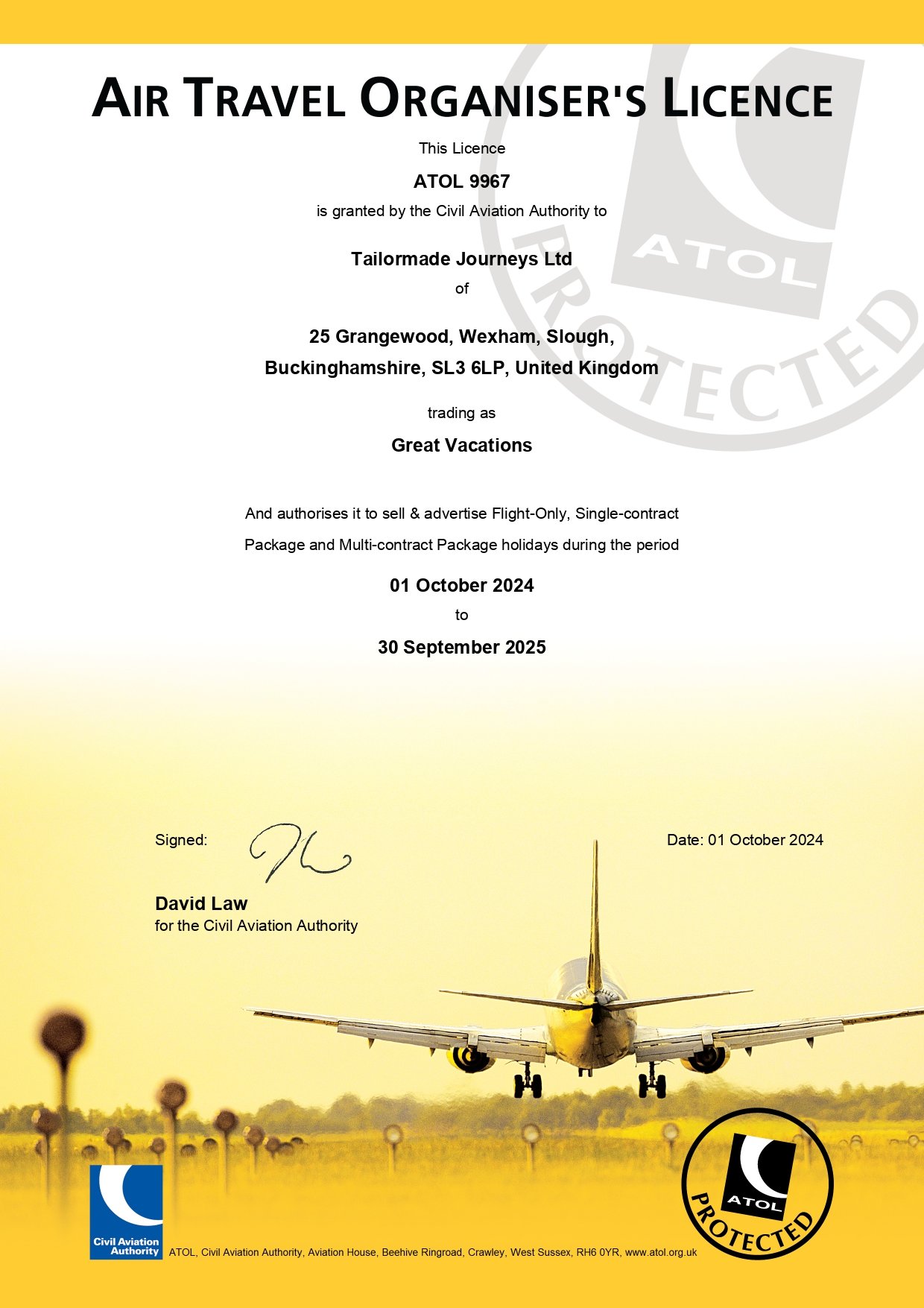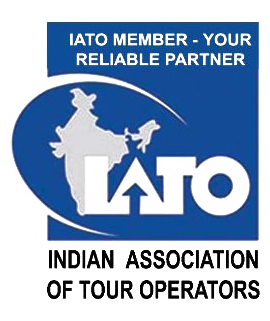Bhutan Heritage Trail
11 Nights / 12 days
Overview
Discover the beauty and charm of Bhutan, a land of snow-capped mountains, lush green landscapes, sturdy fortresses, and warm-hearted people. Here, tradition isn’t just a word; it’s a way of life that you can see and feel everywhere. Unlike much of the world, Bhutan has managed to preserve its unique heritage, standing proudly independent amidst globalization.
This tour offers a genuine experience of the Bhutanese way of life. Journey through picturesque valley towns, visiting temples, monasteries, dzongs (fortresses), and remote villages. Meet the locals and immerse yourself in their daily routines, where life itself is an art form.Embark on this unforgettable vacation to the mythical Himalayan Kingdom of Bhutan, and take home memories of a truly authentic cultural adventure.
Highlights
- Hike to Taktshang Lakhang
- Indulge in the organic Hot Stone Bath
- Hoisting of Prayer flags
- Trip to Haa – one of the least populated Valleys
- Meditation at Buddha Point (largest Buddha Statue in Bhutan)
- Dinner with local Bhutanese family to get a taste of the local food
- Spiritual walk to the 16th century of Khumbu Monastery
- Cooking session of authentic Bhutanese cuisine
- Imposing Punakha Dzong
- Visit of typical Bhutanese Farm House
- Local Dress wearing Session
- Traditional Cultural Program with Mask Dance
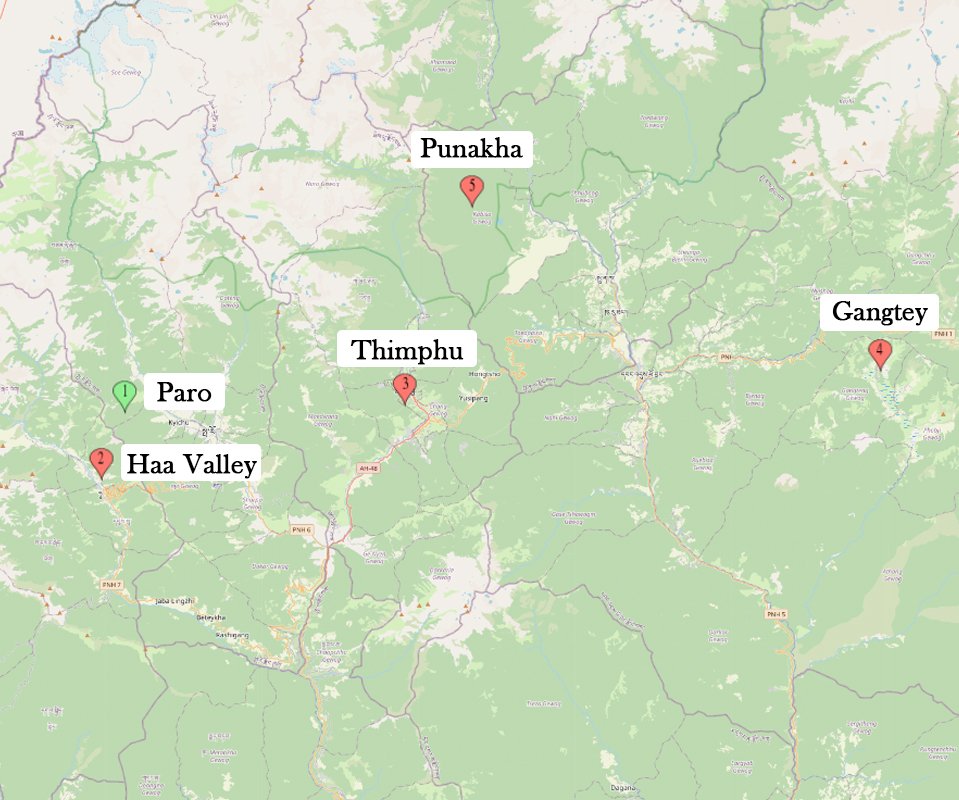
Tour Route
2 Nights
Paro
2 Nights
Haa Valley
2 Nights
Thimphu
2 Nights
Gangtey
2 Nights
Punakha
1 Night
Paro
Detailed Itinerary
- Day 1
- Day 2
- Day 3
- Day 4
- Day 5
- Day 6
- Day 7
- Day 8
- Day 9
- Day 10
- Day 11
- Day 12
Arrive Paro
Upon your arrival at Paro Airport, you will be greeted and taken to your pre-booked hotel. Paro offers stunning panoramic views of the Himalayas, including Mount Everest and other renowned peaks. The approach through the Bhutanese foothills and the descent into the Paro Valley is breathtaking. A Bhutanese guide will meet you and drive you to your hotel.
Afternoon Sightseeing: Depending on your flight schedule, you may visit the following:
Ta Dzong: This ancient watchtower now houses the National Museum of Bhutan, offering fascinating insights into the country’s rich history and culture.
Paro Rinpung Dzong: Known as the “Heap of Jewels,” this fortress was built in 1646. Some scenes from the movie “Little Buddha” (1993) were filmed here, adding a touch of cinematic history to your visit.
Evening: Take a leisurely walk around Paro town and its beautiful valley at your own pace.
Overnight: Stay at your hotel in Paro, where you can relax and prepare for the adventures ahead.
Paro
Morning: Start your day with a hearty breakfast at the hotel.
Excursion to Taktshang Monastery: Later, embark on an excursion to the iconic Taktshang Monastery, also known as the “Tiger’s Nest.” Built in 1684 around Guru Rinpoche’s meditation cave, this incredible monastery clings to a sheer rock cliff, plunging 900 meters into the valley below. According to legend, Guru Padmasambhava flew here on the back of a tigress. The uphill hike to the monastery takes about two to three hours, but reaching this sacred site feels truly rewarding.
Afternoon Sightseeing:
- Ruins of Drukgyal Dzong: Visit the ruins of Drukgyal Dzong, where the Bhutanese finally defeated the invading Tibetans. On a clear day, you can see the peak of Jumolhari, the “Mountain of the Goddess,” standing tall at 7,329 meters (24,029 feet).
Optional Activity: After your afternoon sightseeing, you have the option to experience a traditional Bhutanese hot stone bath at a local farmhouse. Known as Dotsho, this centuries-old practice involves heating river stones and placing them in water to create a relaxing soak. Sometimes, medicinal herbs are added to the water, believed to help with joint pains and other ailments.
Evening: Enjoy a relaxing evening and overnight stay at your hotel in Paro, reflecting on the day’s adventures.
Paro – Haa Valley (BY Private Vehicle 70 Kms 3 Hrs Drive)
Morning: Enjoy breakfast at the hotel and check out.
Drive to Haa Valley via Chelela Pass:
Prayer Flag Hoisting at Chelela Pass: On your way to Haa Valley, you will stop at Chelela Pass, a site adorned with colorful prayer flags. These flags are a significant part of Bhutanese culture, believed to carry prayers to the heavens with each flutter in the wind. They add vibrant hues to the rugged landscape, found around monasteries, homes, bridges, and mountain roads.
Visit to Kila Gompa: Take a short walk to Kila Gompa, a nunnery perched on a steep cliff at 3,500 meters. This site houses seven small temples and about 70 nuns. The hour-long hike to the nunnery is rewarded with magnificent views. Enjoy lunch at Kila Gompa before descending back to the road.
Descent into Haa Valley: After lunch, continue your drive over the prayer flag-strewn pass, reaching almost 4,000 meters, and then descend into the serene Haa Valley.
Arrival in Haa Valley: Check into your pre-booked hotel upon arrival.
Haa Valley: Haa Valley, located on the western edge of Bhutan, borders the Chumbi Valley of Tibet and the Indian province of Sikkim. Opened to tourism in 2002, the valley remains largely untouched, with dense forests and fields of wheat, barley, and some rice. The meadows are home to yaks, cattle, chickens, pigs, and horses.
Evening: Settle in and enjoy the tranquility of Haa Valley, preparing for the adventures to come.
Overnight: Stay at your hotel in Haa Valley.
Haa Valley
Morning: Start your day with a delicious breakfast at the hotel.
Drive to Yotong: After breakfast, drive to Yotong, a picturesque cluster of village homes nestled by the Haa Chhu River. Here, an old trail leads 150 meters uphill to a gompa dedicated to Guru Rimpoche and his eight manifestations. This 300-year-old structure, built by the 16th Je Khempo (Head Abbot of Bhutan), stands among a few farmhouses.
Visit to the Gompa: Explore the gompa, soaking in its rich history and spiritual ambiance. After your visit, a rough road by the monastery will take you back to Yotong by vehicle.
Picnic Lunch: Enjoy a picnic lunch by the riverside, surrounded by the natural beauty of the Haa Valley.
Afternoon Walk: After lunch, take a gentle two-hour walk along the riverside to Haa town. This peaceful walk offers a chance to immerse yourself in the serene landscape.
Explore Haa Town: In Haa town, visit Lhakhang Karpo and Lhakhang Nagpo, two significant religious sites that offer insights into the local culture and spiritual practices.
Evening: Relax and unwind after a day of exploration.
Overnight: Stay at your hotel in Haa Valley, ready for more adventures the next day.
Haa Valley – Thimphu (By Private Vehicle 115 Kms , 4 Hrs Drive)
Morning: Enjoy breakfast at the hotel and check out.
Hike to Thimphu: Begin your hike along the lower road, first following the Haa Chhu River, and then along the Wang Chhu River towards the capital, Thimphu.
- Stop at Dogar Dobji Dzong: En route, visit Dogar Dobji Dzong, a 16th-century structure built by the brother of the Divine Madman, Drukpa Kinley. This dzong was Bhutan’s first jail in 1976 but has since returned to its monastic roots.
Arrival in Thimphu: Upon arrival in Thimphu, check in at your pre-booked hotel.
Afternoon Sightseeing in Thimphu:
Textile & Simply Bhutan Museums: Gain insights into Bhutan’s unique art forms and cultural heritage through these informative museums.
Trashichho Dzong (Fortress of the Glorious Religion): Explore this historic fortress, originally built in 1216 by Lama Gyalwa Lhanampa. It was later taken over by Lama Phajo Drugom Shigpo and renamed by Zhabdrung Ngawang Namgyal in 1641. Today, it serves as the seat of the national government, the central monastic body, and the summer residence of the Je Khenpo (Chief Abbot of Bhutan).
Evening: Relax after your day of travel and exploration.
Overnight: Stay at your hotel in Thimphu, preparing for more adventures in the capital city.
Thimphu
Morning: Start your day with a satisfying breakfast at the hotel.
Visit Buddha Point: Head to Buddha Point, where you can take in the stunning views and, if you wish, meditate in a designated area.
Sangaygang – Wangditse Loop Hike:
- Drive to Sangaygang Viewpoint: Situated at 2,685 meters, this viewpoint offers wonderful views of Thimphu Valley from below the telecommunications tower.
- Hike Details: Begin your approximately two-hour hike from Sangaygang to Wangditse loop. The trail is adorned with prayer flags and beautiful views of Thimphu Valley. After a short and steep climb, take the side footpath to the right where the trail becomes gentler. Along the way, you’ll pass apple orchards and farmhouses.
- Wangditse Monastery: The trail descends gently through oak, blue pine, and rhododendron trees until you reach Wangditse Monastery, founded in 1750 and rebuilt in 2016. The inner chapel houses a two-story statue of Sakyamuni Buddha. The trail ends back at Sangaygang Viewpoint, offering excellent views north towards Samteling Palace, home to the fourth King.
Afternoon:
- King’s Memorial Chorten: In the evening, visit the King’s Memorial Chorten, continuously circumambulated by locals murmuring mantras and spinning prayer wheels. This monument, envisioned by Bhutan’s third king, His Majesty Jigme Dorji Wangchuk, was completed in 1974 as a tribute to his vision of world peace and prosperity.
Dinner with a Local Family: Enjoy dinner with a local family, offering a deep dive into Bhutanese culture, traditions, and daily life.
Overnight: Stay at your hotel in Thimphu, reflecting on the rich experiences of the day.
Thimphu – Gangtey (By Private Vehicle 150 Kms, 5 Hrs Drive)
Begin your day with a delightful breakfast at the hotel.
Drive to Gangtey:
- Dochula Pass: En route to Gangtey, visit Dochula Pass, located about 24 km from Thimphu at an elevation of 3,080 meters. On clear days, you can enjoy spectacular views of the Himalayas. The pass is also home to 108 Druk Wangyal Khangzang Chortens, which are believed to bring great merit to all beings. The journey continues through dense forests of oak and rhododendron trees.
Arrival in Gangtey: The valley of Gangtey is one of the most beautiful and unspoiled areas in Bhutan. The wide, flat valley contrasts sharply with the dense forests you pass through to get there, offering a rare sense of openness.
Afternoon:
- Phobjikha Valley: Upon arrival, check into your pre-booked hotel and take a stroll through the fascinating Phobjikha Valley, known for its pristine beauty.
- Visit Gangtey Monastery: Explore the Gangtey Monastery, one of the main attractions in the valley.
Evening: Enjoy a peaceful evening in Gangtey, soaking in the serene atmosphere.
Overnight: Stay at your hotel in Gangtey, resting up for the adventures ahead.
Gangtey
Enjoy a hearty breakfast at the hotel.
Spiritual Walk to Khumbu Village: Embark on a spiritual walk to the 16th-century monastery in Khumbu Village, a serene spot nestled in a remote corner of Bhutanese farmland.
Kumbu Temple: This temple offers several interesting statues and many historical artifacts and scriptures. On the main floor, you can visit the statue of “Sangay Menla,” the Medicine Buddha. Bhutanese people believe that praying to the Medicine Buddha and chanting his mantra helps in healing from illnesses.
Second Floor: Climb up the traditional Bhutanese staircase (a steep wooden ladder) to the second floor, where you can see statues of “Duesum Sangay” and the temple of “Goenkhang.” “Duesum Sangay” represents the Buddha of the past (Amitabha), the present (Sakyamuni), and the future (Maitreya). “Goenkhang” is dedicated to the protective female deity Sipey Gyelmo, who is believed to look after the local people. Note that females are not allowed to enter the “Goenkhang” temple.
Special Ritual: On the 29th day of the eighth month of the Bhutanese calendar, Kumbu Lhakang performs a special ritual known as “Kumbu Tsham Choe” to commemorate the death of Lama Tsenden Dawa, who built the Kumbu Temple.
Lunch: Enjoy a picnic lunch during your visit to Khumbu Village.
Evening: Return to your hotel in Gangtey for a relaxing evening.
Overnight: Stay at your hotel in Gangtey, reflecting on the spiritual experiences of the day.
Gangtey – Punakha (BY Private Vehicle 70 Kms 3 Hrs Drive)
Enjoy breakfast at the hotel.
Drive to Punakha:
- Chimi Lhakhang: On your way to Punakha, take a short hike to Chimi Lhakhang, also known as the Temple of Fertility. Built in the 15th century by Lama Drukpa Kuenley, who is also known as the Divine Madman, this temple is a significant site for those seeking blessings for fertility.
Lunch: Have lunch en route or upon arrival in Punakha.
Afternoon Exploration:
- Punakha Dzong: After lunch, explore Punakha Dzong, an impressive fortress built by Zhabdrung Ngawang Namgyal in 1637. Located at the confluence of the Pho Chu and Mo Chu Rivers, it is a stunning example of Bhutanese architecture and history.
Evening: Enjoy some free time to walk around Punakha town and the beautiful Punakha Valley.
Overnight: Stay at your hotel in Punakha, enjoying the serene surroundings and reflecting on the day’s experiences.
Punakha
Enjoy breakfast at the hotel.
Excursion to Talo Village:
- Talo Village: Visit Talo, a village known for its cleanliness and beautiful landscapes. Situated at an altitude of 2,800 meters, Talo Sangnacholing offers majestic views of the surrounding areas. The village is renowned for its tidy farmhouses, each with its own flower garden. Corn and sweet peas grow abundantly on the hills, and the women of Talo are especially noted for their beauty.
Lunch: Have lunch before heading to your next destination.
Afternoon Excursion:
- Khamsum Yulley Namgyal Chorten: Visit this chorten built on a ridge above the Punakha Valley. Constructed over nine years with consultation from Holy Scriptures, this four-story temple was built by Her Majesty, the Queen Mother Ashi Tshering Yangdon Wangchuck. The chorten offers panoramic views of the valley and is a testament to traditional Bhutanese craftsmanship.
Evening Cooking Session:
- Cooking Class: Participate in a special cooking session at a local hotel or restaurant. Learn how to prepare traditional Bhutanese dishes under the guidance of experienced chefs. Try your hand at making ‘Emma Datshi,’ Bhutan’s national dish made with chilies and local cheese. This interactive session allows you to experience Bhutanese cuisine firsthand, with the opportunity to taste the fiery and flavorful dishes.
Dinner: Enjoy the meal you helped prepare during the cooking session.
Overnight: Stay at your hotel in Punakha, savoring the culinary experiences and reflecting on your day’s adventures.
Punakha – Paro (By Private Vehicle 125 Kms 4 Hrs Drive
Enjoy breakfast at the hotel.
Discover Rinchengang Village:
Rinchengang Village: Continue your journey with a visit to Rinchengang Village, a small, clustered village in Wangduephodrang. Located on a hill opposite the site where Wangduephodrang Dzong once stood, it’s a 20-minute hike uphill from the nearest road.
Simtokha Dzong: Drive further to visit Simtokha Dzong, the oldest fortress in Bhutan, now housing the School for Buddhist Studies. This fortress offers a glimpse into Bhutan’s rich history and religious education.
Lunch: Enjoy lunch before your afternoon activities.
Afternoon:
- Kyichu Lhakhang: Visit Kyichu Lhakhang, one of the oldest Buddhist temples in Bhutan. Built in the 7th century by Tibetan King Songtsen Gompo, this temple is part of a series of 108 temples miraculously constructed to consecrate the Himalayan region.
Evening Activities:
Local Dress Wearing Session: Back at your hotel, participate in a session where you get to wear the traditional Bhutanese dress. Men wear the Gho, a long robe tied at the waist with a belt called Kera, and women wear the Kira, an ankle-length dress. These garments are made from fine, hand-woven or milled fabric with distinctive colorful patterns.
Traditional Bhutanese Cultural Program: Enjoy a traditional cultural program featuring a mask dance. This performance highlights Bhutanese art, dance, drama, and music, deeply rooted in Buddhist traditions. The show will include 10-12 performers wearing ornate costumes and masks, each aspect of the dance having symbolic meaning. The music and dance reflect Bhutan’s social values and cultural heritage.
Overnight: Stay at your hotel in Paro, soaking in the rich cultural experiences of the day.
Leave Paro
Enjoy your final breakfast at the hotel.
Checkout and Departure:
- Hotel Checkout: After breakfast, check out from your hotel.
- Transfer to Paro International Airport: Our guest relations executive will assist you with the checkout process and transfer you to Paro International Airport for your onward journey.
Thank you for visiting Bhutan, and we hope you had a memorable and enriching experience. Safe travels!
Wish to customise your tour?
Talk to our experts to tailor-make your journey.
Pricing*
The Prices for the All Our Tours are on Request Only .
Kindly fill the Request Form Below for the Price of the TOUR.
Price will Included
- Accommodation on Twin/Double Sharing basis
- Daily Breakfast, Lunch and Dinner
- Private Transfers
- City Sightseeing
- Private Car with Driver
- Accompanying English Speaking Guide
- Entrances to Monuments
- Bhutan Development Fees
- Bhutan Visa Fee
Price will Not Included
- International Flight
- Insurance
- Expenses of Personal nature
- Camera and Video charges
- Tips
Hotels Included
* Terms and Conditions Apply
- Prices applicable for standard hotels, luxury accommodations available on request.
- Christmas and New Year supplement applicable extra.
- Local taxes apply.

